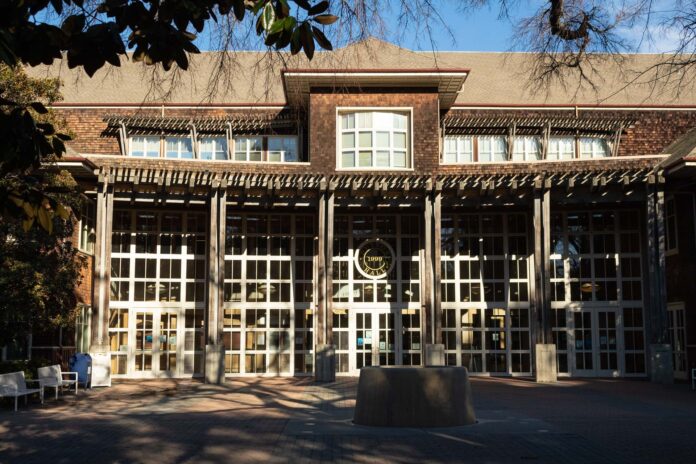The relief funds are direct-deposited to students as the Coronavirus Response and Relief Supplemental Appropriations Act goes into effect
In April, many students found new funds automatically deposited under MyAwards thanks to the second allocation of the Higher Education Emergency Relief Fund (HEERF), a federal aid package designed to help students and universities recover financially from the COVID-19 pandemic.
This newest funding disbursement was part of the larger bill known as the Coronavirus Response and Relief Supplemental Appropriations Act (CRRSA), which was signed into law in December 2020 and started distributing funds to students in April.
Alexandra Castro, a third-year Chicana/Chicano studies major, said she first heard about the HEERF funds when it generated a buzz on TikTok.
“I saw on TikTok people were like, ‘Oh yeah, I got $4,000 from the Higher Education Relief Fund,’ or, ‘I got $3,000,’” Castro said. “Then when I saw it was just $1,000—I was grateful for it, but also like, ‘That’s so weird. Why are we getting so much less than what I saw from UC Riverside students or San Diego?’”
The funds are tiered based on financial need, according to Sarah Mangum, the associate vice chancellor for budget and institutional analysis. Mangum said via email that UC Davis has received approximately $52 million from the CRRSA, half of which will be allocated to the institution and the other half through financial aid.
Prior to this most recent group of funds, the Coronavirus Aid, Relief and Economic Security (CARES) Act allocated $34 million in aid and relief in Fall Quarter 2020 to UC Davis.
“UC Davis has not received any other type of COVID-19 external aid,” Mangum said. “We are applying to [Federal Emergency Management Agency (FEMA)] for funding where there are eligible costs, but we have not yet received any FEMA funds and do not expect to receive significant allocations from this source since the eligibility requirements are very limited for higher education.”
The funds allocated to the institution are intended to help recoup lost funds due to pandemic closures as well as COVID-19 related expenses such as testing, quarantine housing, cleaning and protective equipment, Mangum said.
“Since March of 2020, campus units [any organizational unit that reports to a Dean, Vice Chancellor, or similar top-level executive] have been tracking extraordinary expenses and lost revenue due to the pandemic,” Mangum said.
Castro, who received her CRRSA HEERF grant by direct deposit on MyAwards on April 14, said the money went to housing.
“I had to move out of my house in order to keep working and going to school,” Castro said. “So the money I received went toward my rent.”
Though the funds have been a help to some students, not all students have access to the federal funds, according to the AB540 and Undocumented Student Center FAQ on the aid.
“[Undocumented students] aren’t eligible for federal funding, similar to FAFSA,” said Laura Bohorquez Garcia, the director of the AB540 and Undocumented Student Center. “So, to be able to offset and still be able to provide support, California—but specifically our UC Davis—has been able to use institutional funding and state funding to be able to provide support upward of about $1,000.”
Garcia said undocumented students often ask her about the funds in relation to the “Public Charge” rule, which limits the ability of students who are not citizens from receiving financial support if they are deemed “likely to become ‘primarily dependent on the government for subsistence.’” She said that the funds do not need to be paid back and should not impact their ability to apply for the California DREAM Act or other attempts to change their status.
“It will assist—I think any financial support helps—but it definitely does not close the gap,” Garcia said.
For students who are not currently eligible for the California DREAM Act, they are raising funds through private donors to help bridge the gap.
“I think the biggest thing that I noticed was, in California, there were a lot of students that were stuck in leases in Davis but they couldn’t afford them,” Garcia said. “Ultimately they still had to pay for the lease and still move in with family or community to try to make it through.”
Mangum expects that the pandemic-related expenses will continue.
“We will also reserve some funds for allocation during the next academic year since we expect there will continue to be some extraordinary expenses as we safely reopen campus,” Mangum said.
Approximately $90 million from HEERF will be distributed in the fall through the American Rescue Plan (ARP), split evenly between the university and student financial aid, pending guidance, Mangum said.
Castro said that, for her, the pandemic changed where she lived, but every student was impacted by the pandemic differently.
“There are definitely students who need that help now,” Castro said. “I wish they can get the ball rolling on it.”
Written by: Kathleen Quinn — campus@theaggie.org




